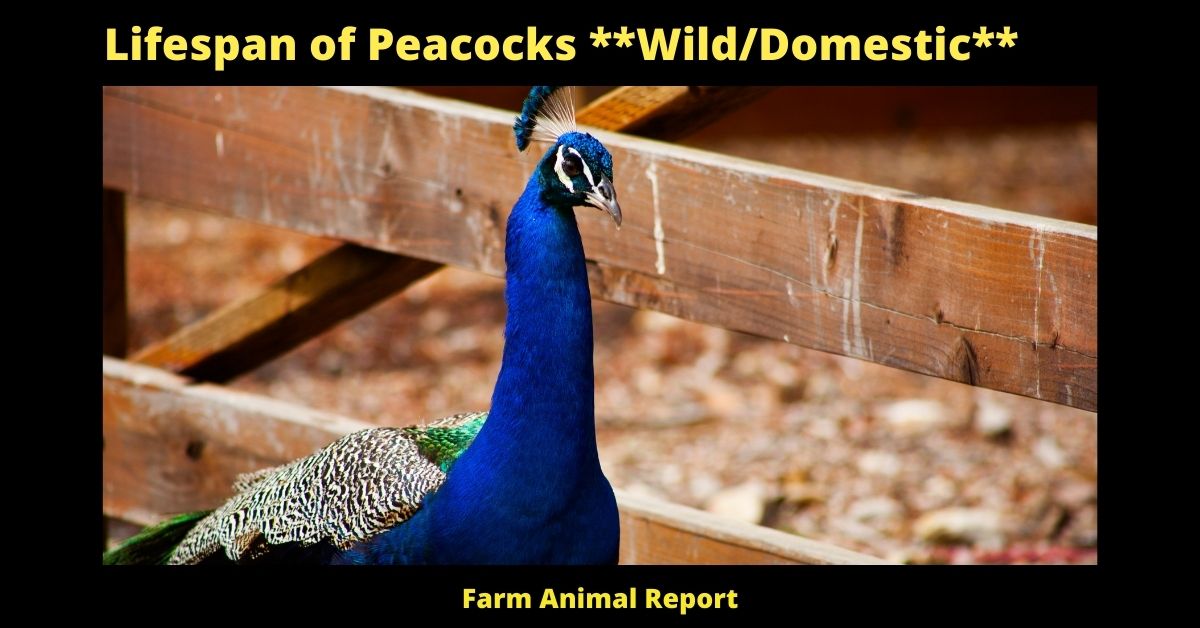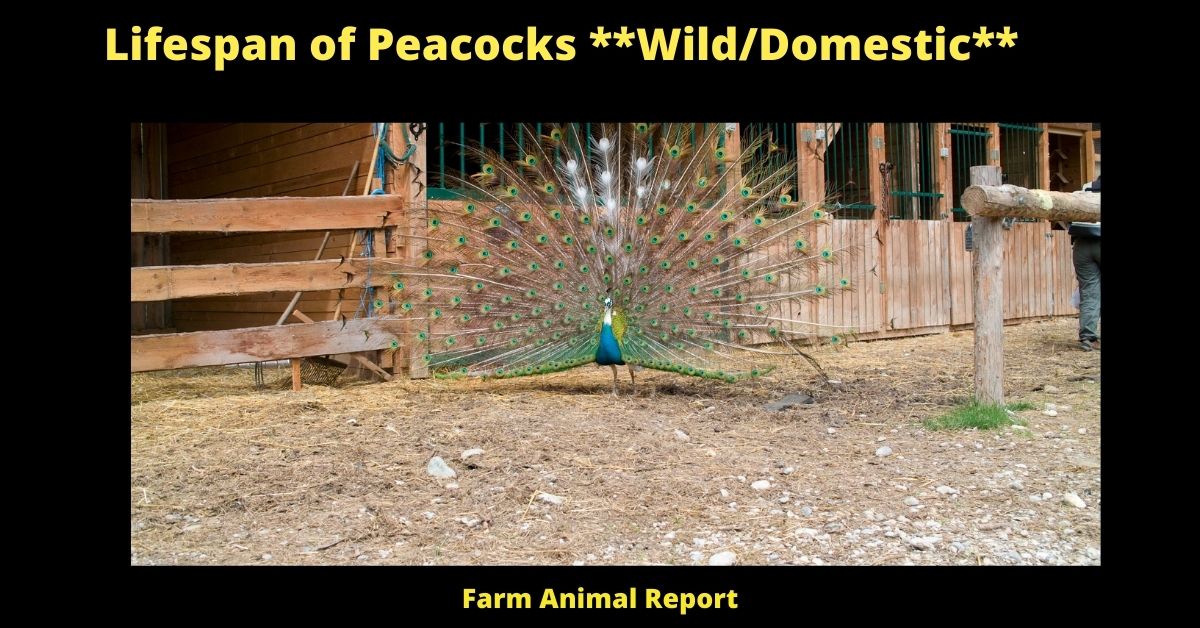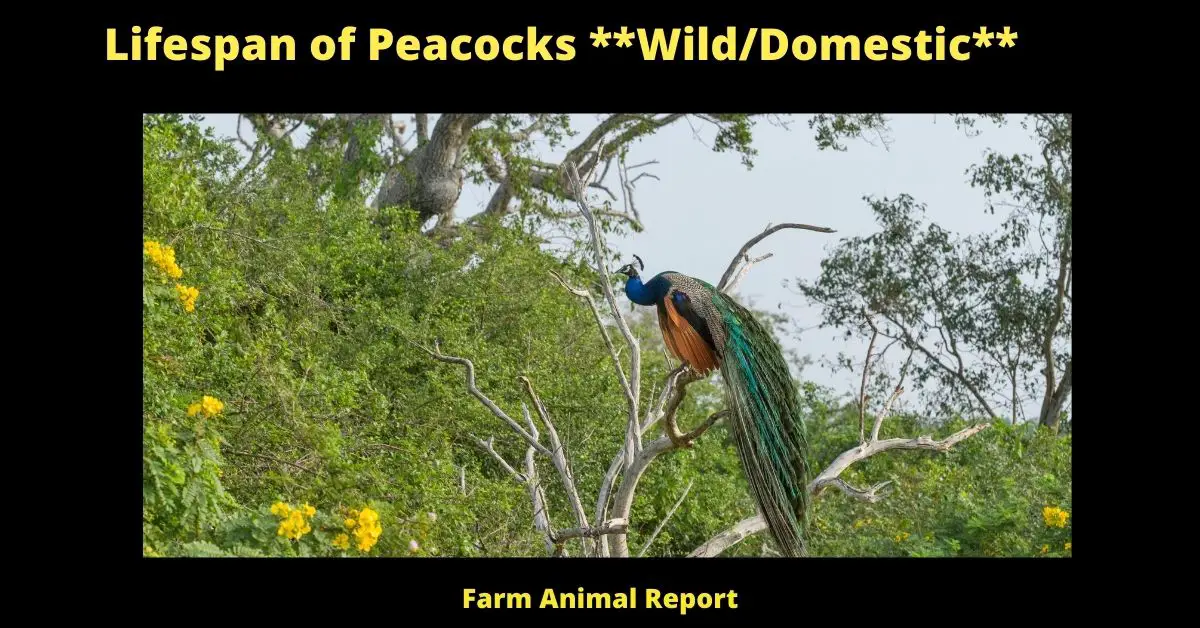Peacocks are known for their beautiful feathers and elaborate mating dances. They are also the national bird of India, which is one of the most populated countries in the world! A lot of people don’t know that peacocks have an average peacocks lifespan of about 20 years. This means that if you live near a large population area, like Mumbai or Delhi, then there is likely to be plenty of peacock activity around your home.
The peacock is a member of the peafowl family and is found in India, Africa, and parts of South America. Because they can be found in such a wide range of habitats and climates, the peacock has developed several different adaptations to survive. For instance, peafowl has very strong legs that work like catapults when running away from predators. They also have sharp claws which allow them to climb trees for safety!
See Amazons Educational Resources on Raising Peacocks
Peacocks are most vulnerable to predators when they are young and unable to fly. Once they’re able to spread their wings, however, it is much easier for them to escape potential danger!
Peacock Lifespan?
As a general rule, a Peacocks’s life span ranges from 7-20 Years. Determining factors are whether peacocks are in the wild or domesticated. Health Diet Predator deaths are all major factors. In captivity, peacocks have a much lower chance of being killed by a predator. The most common causes of death in captive peacocks are disease or malnutrition
Peacocks in captivity tend to have a longer life expectancy.
In the wild, peacock predators include other birds and large cats like tigers or leopards. However, most of these animals hunt for food during the night when it is harder for peacocks to see them coming! There are no documented cases where humans were attacked by peacocks. Peacock Lifespan.

In captivity, peacocks have a much lower chance of being killed by a predator. The most common causes of death in captive peacocks are disease or malnutrition. Peacocks that receive a good diet and proper care can live for up to 20 years!
Lifespan of Peacocks – The male has a spectacular tail of around 200 feathers which he displays as part of his courtship ritual. 10 of those feathers are in the tail.
Lifespan in the wild (Peafowl)
Peacocks live for around 7 + years in the wild. They have to be careful of predators, such as tigers and leopards and can succumb to disease or accidents.
Their diets include plants, seeds, and insects.
Their cousins in the united states are pheasants and turkeys
They both grow in the wild and are also domesticated
Lifespan in captivity (Peacocks Live Longer)
Peacocks can live up to 20 years in captivity. They are usually fed a healthy diet of pellets, vegetables, and fruits. they also need plenty of fresh water and should be given a dust bath every week or so to keep their feathers clean and free from parasites.
Domestic Peacocks are protected from predators and disease. They are usually raised in a contained area and have a safe home.
In the United States, Peacocks are raised for their feathers which can be used in clothing or to decorate homes. In China, peacocks are sometimes killed as part of Chinese Medicine. The meat is supposed to give men Strength and virility while the oil from its skin helps soothe arthritis pain.
Peacocks Diet in the Wild
Peacocks are omnivores in the wild. They eat plants, animals, and insects. Their diet consists of small invertebrates such as grasshoppers, beetles, and caterpillars; fruits including berries ad figs; weeds, corn crops that have fallen to the ground or even agricultural food they find on fields.
Peacocks Diet in Captivity
Captive peacocks are typically fed a diet that is high in protein and low in fiber. This diet helps to keep their feathers clean and in good condition. Peacocks can be fed a variety of things, but the most common are game bird feed, cracked corn, rabbit food pellets, and greens such as kale or romaine.
Peacocks are ground feeders and spend a lot of their time foraging on the ground. They will also eat from trees and shrubs. Captive peacocks should have access to a good size yard or run where they can roam around and scratch the ground for food.
They Forage and peck for their food on the ground. Captive peacocks should be fed daily, but they do not need to be fed as much in the winter due to lower activity levels during this time of year.
Vitamins and supplements for peacocks include
- Vitamin A
- Vitamin C
- Vitamin D
- To strengthen the immune system and improve plumage quality
- A calcium supplement to meet the daily requirement for a healthy bird.
- Seeds, fruits, greens are high in vitamin C such as turnips or oranges. Calcium supplements can be crushed into this food if needed.
- During breeding season peacocks should have access to grit that they will eat from time to time. This will help to break down seeds for easier digestion.
Peacocks eat insects their diet includes
- worms
- ticks
- grasshoppers
- caterpillars
- beetles
- aphids and other small insects.
- Peacocks eat fruits such as figs, mulberries, apples and grapes in the wild. In captivity they can be fed these foods too but in moderation due to sugars content in fruit. Peahens and peacock chicks also eat insects in the wild.
- The lifespan of peacocks is around 15-20 years depending on their gender, nutritional status and what they are exposed to such as predators or accidents. Peacock eggs laid by captive birds will be infertile if they have not been fertilized by a male bird so there would be no chicks born from these eggs.
Life span on Peacocks raised for Meat
A peacock matures at around 16 weeks and can be butchered at about 26 weeks.
A peahen will begin laying eggs at around 20 weeks and can lay up to several hundred eggs a year.
A peahen hatches on average about 25 eggs a year.
The average weight for a meat peacock is five pounds and the average weight for a meat peahen is four pounds.
A male peacock can mate with several females, but a female peahen can only mate with one male.
A male peacock will try to attract the attention of several hens by spreading out his tail feathers and making sounds called “quacking.” The more birdcalls they hear (known as the Peacocks’ Dance), the better their chances are at mating.
What are the most common causes of death for peacocks?
The most common causes of death for peacocks are diseases, accidents, and predation. Peacocks can succumb to a variety of illnesses, including respiratory infections, salmonella poisoning, and Newcastle disease. They may also be injured in traffic accidents or attacked by predators. Many peacocks die before they reach their full potential lifespan due to one of these causes. However, a few lucky peacocks may live for up to 20 years in the wild.

The Oldest Peacock
The lifespan of a peacock can vary depending on its environment and lifestyle. In captivity, they often have a lifespan of 15-20 years, while those living in the wild typically have a lifespan of five to ten years. The oldest recorded peacock was around 29 years old. Although their lifespan is not as long as some other animals, the beauty and majesty of these birds make them well worth protecting.
Jump to 10 Ways to Make **MONEY** Peacock Farming
Other Important Tags
- indian peafowl
- congo peacock feathers
- male indian peafowls
- upper tail feather
- tail feather coverts
- tail feather coverts
- tail feather coverts
- peacock lifespan peacocks
- peacocks live longer
Final Thoughts
In summary, peacocks have a lifespan of around 15-20 years. They eat a variety of things, including insects, fruits, and seeds. The most common causes of death for peacocks are diseases, accidents, and predation. However, they are beautiful creatures that deserve to be protected for many years. Thanks for reading!





